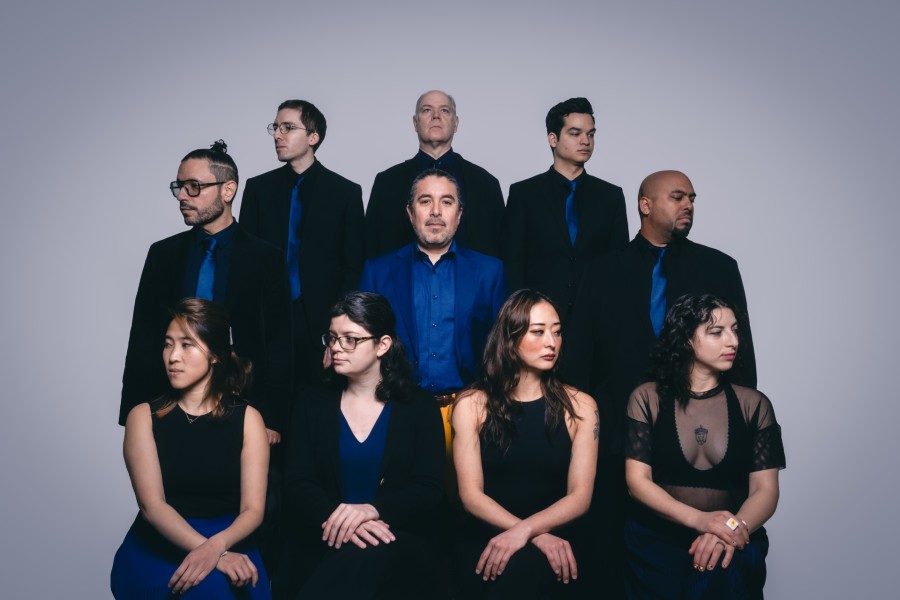 Chancellor Carmen Fariña today released Equity and Excellence for All: Diversity in New York City Public Schools. The release of this diversity plan is the next step in the City’s ongoing work to increase school diversity. It represents a critical milestone in the City’s Equity and Excellence for All agenda, and begins to lay out an approach to increasing diversity in the school system.
Chancellor Carmen Fariña today released Equity and Excellence for All: Diversity in New York City Public Schools. The release of this diversity plan is the next step in the City’s ongoing work to increase school diversity. It represents a critical milestone in the City’s Equity and Excellence for All agenda, and begins to lay out an approach to increasing diversity in the school system.
The plan includes a policy statement identifying the Department of Education’s (DOE’s) commitment to school diversity and belief that all students benefit from diverse and inclusive classrooms, and sets specific initial goals for making schools more diverse and inclusive that will be reported on annually in the School Diversity Accountability Act. It includes the creation of a School Diversity Advisory Group, which will make formal policy recommendations to the Mayor and Chancellor, and a process for engaging community school districts in planning around diversity.
Immediate policy changes in Diversity in New York City Public Schools include the elimination of the Limited Unscreened method for high school admissions, the elimination of revealed middle school ranking, the creation of online applications for middle and high school admissions, the expansion of Diversity in Admissions pilots to include contracted pre-K providers (New York City Early Childhood Education Centers, or NYCEECs), the evaluation and expansion of efforts targeted at increasing access for students in temporary housing as well as efforts targeted at increasing access to the City’s eight specialized high schools, and the opening of 15 new schools or programs over the next three years that have specific plans to serve diverse populations.
“We believe in Equity and Excellence for all our students. Increasing the diversity and inclusivity of our schools and classrooms is critical to building on the highest-ever graduation and college enrollment rates and reaching higher for the children and families of New York,” said Mayor Bill de Blasio. “This plan is an important step forward with concrete goals, and I am looking forward to hearing from students, families, educators and community members through the School Diversity Advisory Group and community school districts, who will drive the ongoing work.”
“I believe – and years of research and my own experience show – that all students benefit from diverse schools and classrooms. Diversity in New York City Public Schools is the next step in our commitment to serving every child, regardless of their zip code or background, and it is central to our Equity and Excellence for All agenda. Real, sustainable change comes from the ground up, and the community-driven reform through the School Diversity Advisory Group and district efforts that we are launching today will have the largest and longest-term positive impact on students, schools and communities,” said Schools Chancellor Carmen Fariña.
The plan builds on steps the DOE has taken at the local and citywide levels to increase school diversity, including launching Diversity in Admissions pilots to create socioeconomic diversity, increasing the number of Dual Language programs that bring together English and non-native speakers, and expanding access for Students with Disabilities. It launches a long-term approach that will engage communities and begin to address the long-standing challenge of schools and classrooms that do not reflect the diversity of the City.
The plan has four sections, summarized below:
1) Set Priorities and Goals
Putting forward the DOE’s policy goals and initial goals will foster a shared vocabulary and meaningful and productive conversations with communities across the City, as well as with researchers and practitioners.
The Department of Education is reinforcing school diversity as a priority with this official policy statement:
The New York City Department of Education is committed to supporting learning environments that reflect the diversity of New York City. We believe all students benefit from diverse and inclusive schools and classrooms where all students, families and school staff are supported and welcomed. This work is essential to our vision of Equity and Excellence for all NYC students.
The plan also identifies three initial goals for the community to review, help the DOE work towards, and build on. These are:
- Increase the number of students in a racially representative school by 50,000 over the next five years;
- Decrease the number of economically stratified schools by 10 percent (150 schools) in the next five years; and
- Increase the number of inclusive schools that serve English Language Learners and Students with Disabilities
The DOE considers racially representative schools as those where black and Hispanic students make up at least 50 percent of the student population but no more than 90 percent of the student population, given that black and Hispanic children constitute 70 percent of the citywide student population. Schools are considered economically stratified if their economic need, as measured by the DOE’s Economic Need Index, is more than 10 points higher or lower than the City average.
DOE will report to the City Council on progress towards these three goals as part of the annual report submitted under the School Diversity Accountability Act. Longer-term goals will grow out of community collaboration.
2) Convene and Collaborate
The DOE is committing to and prioritizing a process of community collaboration that will be the primary driver of citywide and district-level diversity plans. The Chancellor’s Office, with the support of the Division of Family and Community Engagement, will work as the primary technical advisor and internal support for the School Diversity Advisory Group and district-based planning efforts.
The School Diversity Advisory Group that will tackle citywide policies and practices such as admissions and program planning:
- It will be chaired by José Calderón, President, Hispanic Federation; Maya Wiley, chair of the Civilian Complaint Review Board and Professor of Urban Policy and Management at the New School; and Hazel Dukes, President of the NAACP New York State Conference. It will include city government stakeholders, local and national experts on school diversity, parents, advocates, students, and other community leaders.
- Over the next year, the School Diversity Advisory Group will be tasked with evaluating initial policies laid out in the plan and adjusting them or putting forward additional measures.
- Based on their findings, the School Diversity Advisory Group will make formal recommendations on citywide policy and practice to the Mayor and Chancellor by June 2018.
- The School Diversity Advisory Group will also be tasked with providing recommendations for the long-term governance structure for this work within the DOE.
Starting this fall, DOE will kick off community stakeholder engagement processes in several districts – including District 15 in Brooklyn – that have already engaged in conversations about fostering school diversity. There will be more information on processes in specific districts in the coming weeks.
As part of the district work, the DOE will continue to work as a technical advisor to the Socioeconomic Integration Working Group of the District 1 Community Education Council in its effort to create a district-wide equitable admissions model and Family Resource Center to increase diversity in its elementary schools. The DOE will continue to help the working group craft a proposal that is fair and feasible, and gains the support of school leaders, school communities, and other critical stakeholders, in time for the admissions cycle for the kindergarten class entering in fall 2018.
3) Act
The plan includes twelve proposals to address policies and practices that pose challenges to school diversity. Work on these proposals is underway and timelines outlined for each are within the plan.
The proposals are:
1) Eliminate “limited unscreened” as a high school admissions method and replace with admissions methods that will promote greater diversity
2) Develop strategies to increase access to screened schools for all students, especially high-needs students
a. Eliminate Revealed Middle School Ranking
b. Increase access to Screened High Schools and Middle Schools for Students with Disabilities, English Language Learners, and Students in Temporary Housing
3) Streamline the formal mechanisms for families to learn about school options and apply
a. Create online applications for middle and high school admissions
b. Expand NYC School Finder to all admissions processes
c. Work with schools to streamline school tours, open houses, and registration for school-based assessments and auditions
4) Expand Diversity in Admissions pilots
5) Evaluate efforts from the Students in Temporary Housing admissions pilot and propose a revised plan
6) Analyze and expand the Specialized High Schools diversity initiatives
7) Plan for diversity when opening new, high-quality schools and programs
8) Ensure diversity is a factor in school rezoning and improve the rezoning process to deepen engagement with communities
9) Target funding, including magnet grant funding, to foster diversity
10) Foster welcoming school climates for all students by continuing and expanding school discipline reform
11) Increase participation of underrepresented students in STEM and rigorous courses
12) Improve all schools through the Equity and Excellence for All agenda
4) Inform
In fall 2017, the DOE is launching a new webpage that will share information and resources related to our diversity efforts, including research on the benefits of diverse schools and classrooms as well as updated information on the School Diversity Advisory Group and district processes.
“New York City is one of the most diverse cities in the country, and social research has demonstrated time and again that racially and economically diverse schools improve educational outcomes for all our children,” said Maya Wiley, Chair of the Civilian Complaint Review Board and Professor of Urban Policy and Management at the New School, and School Diversity Advisory Group Chair. “The School Diversity Advisory Group represents an important step in a ground-up approach to strengthen public education in New York City and I’m proud to be a part of it.”
“The creation of the School Diversity Advisory Group is an important next step reflecting this administration’s commitment to school diversity and equity,” said Hazel Dukes, President of the NAACP New York State Conference, and School Diversity Advisory Group Chair. “I am excited to lead the work alongside Maya Wiley and José Calderón, and I believe we are in a unique position to positively impact the education and long-term success of New York City students and their families.”
“Public education is the path to opportunity for our children, and making our classrooms more diverse and inclusive is critical for delivering on its promise,” said José Calderón, President of the Hispanic Federation and School Diversity Advisory Group Chair. “The work of the School Diversity Advisory Group has tremendous potential to impact 1.1 million students, and support action around school diversity not just in New York City, but nationwide.”
For more information, Equity and Excellence for All: Diversity in New York City Public Schools is available online at schools.nyc.gov/diversity, and letters about this plan are being backpacked home to all families of New York City public school students this week. Families and community members may also email diversity@schools.nyc.gov with questions, comments or ideas.
Become a Harlem Insider!
By submitting this form, you are consenting to receive marketing emails from: Harlem World Magazine, 2521 1/2 west 42nd street, Los Angeles, CA, 90008, https://www.harlemworldmagazine.com. You can revoke your consent to receive emails at any time by using the SafeUnsubscribe® link, found at the bottom of every email. Emails are serviced by Constant Contact








